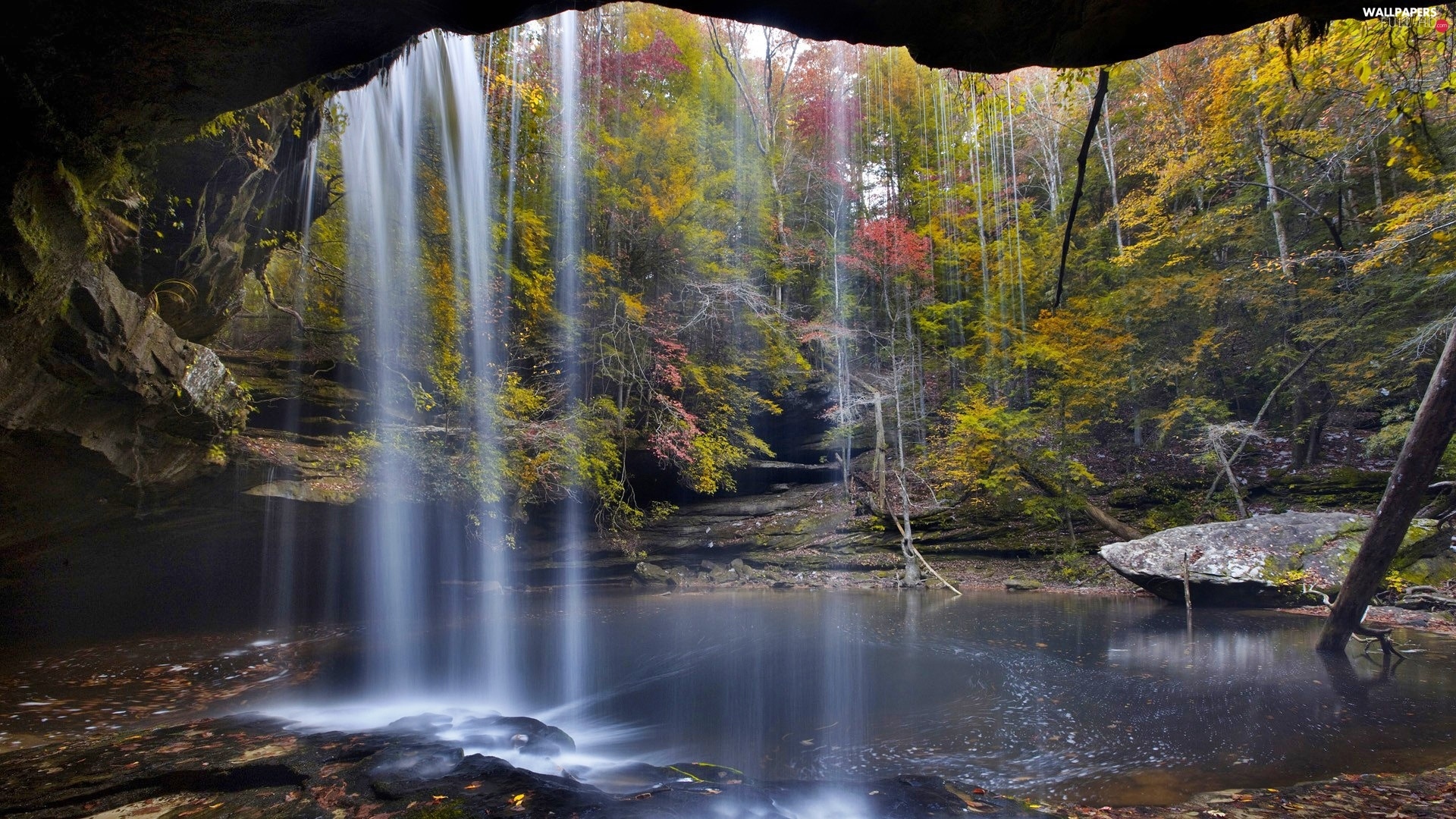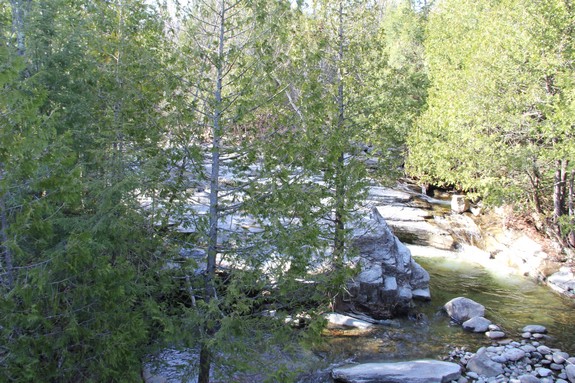

When the ice melted, the upper Great Lakes emptied into the Niagara River, which followed the rearranged topography across the Niagara Escarpment. Niagara Falls is center-right between Lake Ontario and Lake Erie. Scientists posit there is an old valley, St David's Buried Gorge, buried by glacial drift, at the approximate location of the present Welland Canal. The retreat of the ice sheet left behind a large amount of meltwater (see Lake Algonquin, Lake Chicago, Glacial Lake Iroquois, and Champlain Sea) that filled up the basins that the glaciers had carved, thus creating the Great Lakes as we know them today. The features that became Niagara Falls were created by the Wisconsin glaciation about 10,000 years ago. Several thousand birds migrate and winter in the surrounding area. The Niagara River is an Important Bird Area due to its impact on Bonaparte's gulls, ring-billed gulls, and herring gulls. The verdant green color of the water flowing over Niagara Falls is a byproduct of the estimated 60 tonnes/minute of dissolved salts and rock flour (very finely ground rock) generated by the erosive force of the Niagara River. Water diversion is regulated by the 1950 Niagara Treaty and is administered by the International Niagara Board of Control. The water flow is halved at night and during the low tourist season winter months and only attains a minimum flow of 1,400 cubic metres (49,000 cu ft) per second. This is accomplished by employing a weir – the International Control Dam – with movable gates upstream from Horseshoe Falls.Īmerican Falls (large waterfall center-left) and Bridal Veil Falls (right) During the summer months, at least 2,800 m 3 (99,000 cu ft) per second of water traverse the falls, some 90% of which goes over Horseshoe Falls, while the balance is diverted to hydroelectric facilities and then on to American Falls and Bridal Veil Falls.

Since the flow is a direct function of the Lake Erie water elevation, it typically peaks in late spring or early summer. The average annual flow rate is 2,400 m 3 (85,000 cu ft) per second. The peak flow over Horseshoe Falls was recorded at 6,400 m 3 (230,000 cu ft) per second. The distance between the American extremity of Niagara Falls and the Canadian extremity is 1,039 m (3,409 ft). The larger Horseshoe Falls is about 790 m (2,590 ft) wide, while the American Falls is 320 m (1,050 ft) wide. Horseshoe Falls is about 57 m (187 ft) high, while the height of the American Falls varies between 21 and 30 m (69 and 98 ft) because of the presence of giant boulders at its base. Niagara Falls was formed when glaciers receded at the end of the Wisconsin glaciation (the last ice age), and water from the newly formed Great Lakes carved a path over and through the Niagara Escarpment en route to the Atlantic Ocean.Ĭharacteristics Canadian Horseshoe Falls at right Niagara Falls is 27 km (17 mi) northwest of Buffalo, New York, and 69 km (43 mi) southeast of Toronto, between the twin cities of Niagara Falls, Ontario, and Niagara Falls, New York. Balancing recreational, commercial, and industrial uses has been a challenge for the stewards of the falls since the 19th century.

Niagara Falls is famed for its beauty and is a valuable source of hydroelectric power. Horseshoe Falls is the most powerful waterfall in North America, as measured by flow rate. During peak daytime tourist hours, more than 168,000 m 3 (5.9 million cu ft) of water goes over the crest of the falls every minute. Bridal Veil Falls is separated from Horseshoe Falls by Goat Island and from American Falls by Luna Island, with both islands situated in New York.įormed by the Niagara River, which drains Lake Erie into Lake Ontario, the combined falls have the highest flow rate of any waterfall in North America that has a vertical drop of more than 50 m (160 ft). The smaller American Falls and Bridal Veil Falls lie within the United States. The largest of the three is Horseshoe Falls, which straddles the international border of the two countries. Niagara Falls ( / n aɪ ˈ æ ɡ ər ə/) is a group of three waterfalls at the southern end of Niagara Gorge, spanning the border between the province of Ontario in Canada and the state of New York in the United States. Niagara River into the Niagara Gorge on the border of New York in the United States and Ontario in CanadaĤ3☀4′48″N 79☀4′29″W / 43.0799°N 79.0747°W / 43.0799 -79.0747 ( Niagara Falls) Niagara Falls as viewed from the Canadian side of the river, including three individual falls (from left to right): American Falls, Bridal Veil Falls, and Horseshoe Falls.


 0 kommentar(er)
0 kommentar(er)
